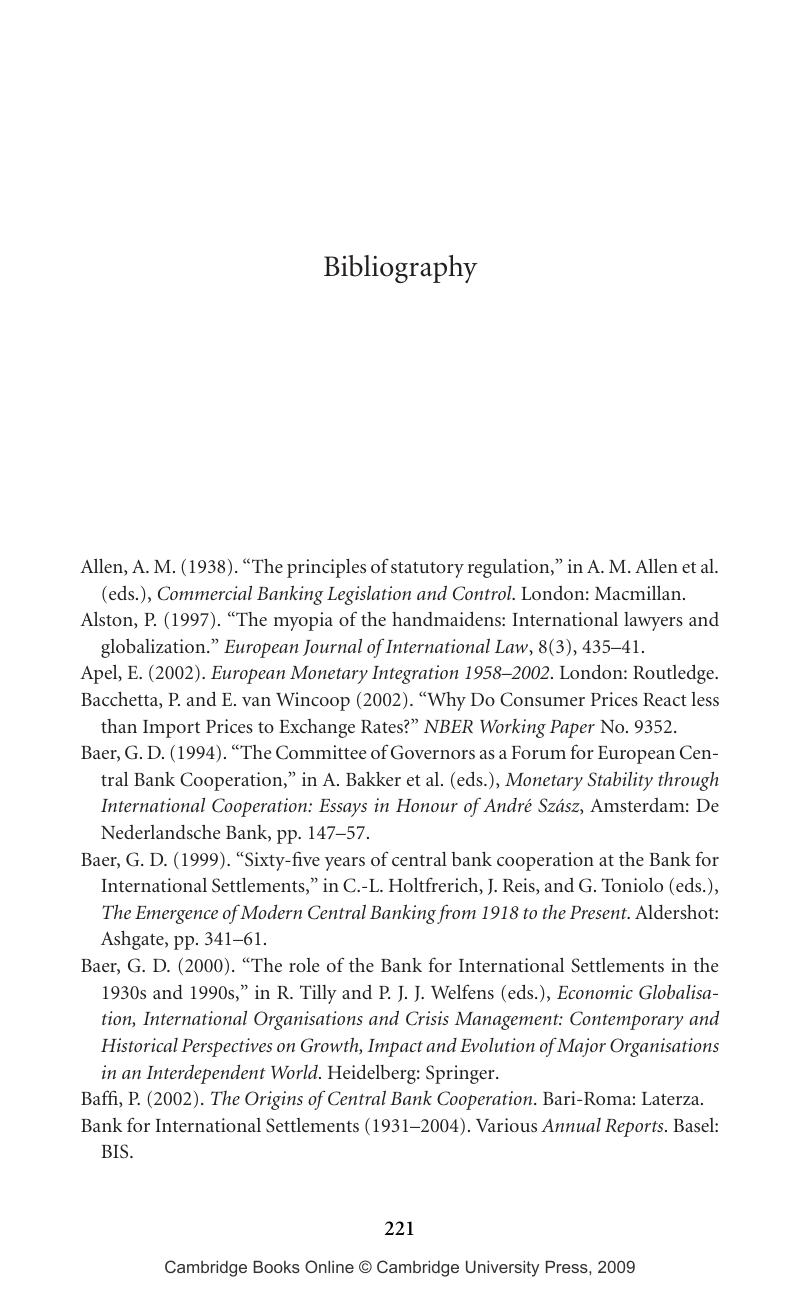Book contents
- Frontmatter
- Contents
- Acknowledgments
- Contributors
- Introduction: Past and Future of Central Bank Cooperation
- 1 One Hundred and Thirty Years of Central Bank Cooperation: A BIS Perspective
- 2 Almost a Century of Central Bank Cooperation
- 3 Architects of Stability? International Cooperation among Financial Supervisors
- 4 Central Banks, Governments, and the European Monetary Unification Process
- 5 The Future of Central Bank Cooperation
- 6 Interdependence and Cooperation: An Endangered Pair?
- Bibliography
- Index
- Studies in Macroeconomic History
- References
Bibliography
Published online by Cambridge University Press: 07 August 2009
- Frontmatter
- Contents
- Acknowledgments
- Contributors
- Introduction: Past and Future of Central Bank Cooperation
- 1 One Hundred and Thirty Years of Central Bank Cooperation: A BIS Perspective
- 2 Almost a Century of Central Bank Cooperation
- 3 Architects of Stability? International Cooperation among Financial Supervisors
- 4 Central Banks, Governments, and the European Monetary Unification Process
- 5 The Future of Central Bank Cooperation
- 6 Interdependence and Cooperation: An Endangered Pair?
- Bibliography
- Index
- Studies in Macroeconomic History
- References
Summary

- Type
- Chapter
- Information
- The Past and Future of Central Bank Cooperation , pp. 221 - 236Publisher: Cambridge University PressPrint publication year: 2008



